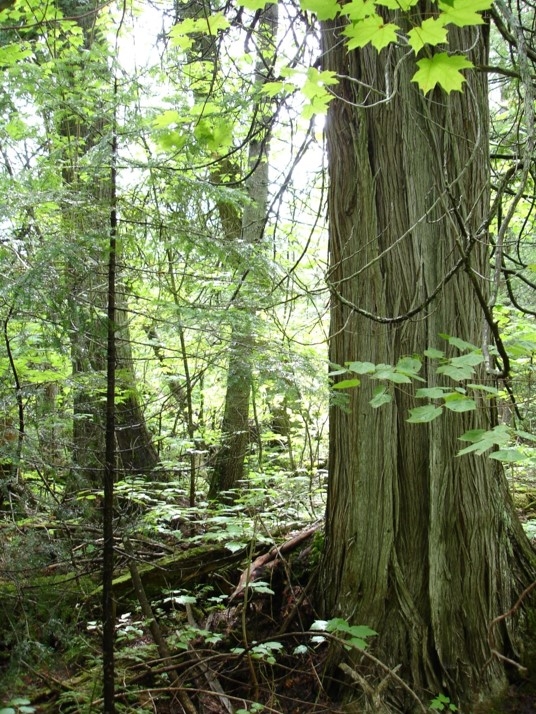Forested Wetland Group

Forested Wetlands occur throughout Michigan and are characterized by dominance of trees, which typically contribute greater than 50% of the overall canopy cover. Forested Wetlands occur on a variety of landforms including depressions on glacial outwash plains, moraines, and lakeplains, outwash channels, poorly drained lakeplain, and within kettles on pitted outwash plains and ice-contact topography. Soils that support Forested Wetlands include both organics and mineral soils and range from shallow to deep, acidic to alkaline, and saturated to seasonally inundated. Natural processes that influence species composition and community structure include groundwater seepage, seasonal flooding, drought, windthrow, flooding by beaver, insect outbreaks, and occasional fires.
Eight natural community types fall within the Forested Wetland group: poor conifer swamp, rich conifer swamp, rich tamarack swamp, hardwood-conifer swamp, floodplain forest, northern hardwood swamp, southern hardwood swamp, and wet-mesic flatwoods. Classification of these Forested Wetland types is based on species composition, community structure, differences in soil chemistry and composition, hydrology, geographic distribution, and landscape setting.
Citation
Cohen, J.G., M.A. Kost, B.S. Slaughter, D.A. Albert, J.M. Lincoln, A.P. Kortenhoven, C.M. Wilton, H.D. Enander, and K.M. Korroch. 2020. Michigan Natural Community Classification [web application]. Michigan Natural Features Inventory, Michigan State University Extension, Lansing, Michigan. Available https://mnfi.anr.msu.edu/communities/classification. (Accessed: December 14, 2025).

